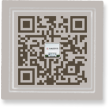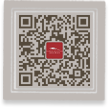- 中文
- EN
- Français
- 日本語
- 한국어
- 繁體中文
Exhibition of the Sanxitang Model Calligraphy launched in the Hunan Museum
On January 22nd, 2021, Exhibition of the Sanxitang Shiqubaoji Model Calligraphy was opened to the public. This is another important exhibition of painting and calligraphy, following the “Qi Baishi art exhibition” and the “Qi Family figure painting in Ming and Qing Dynasties exhibition”.

The Sanxitang Model Calligraphy was carved in 1747. Emperor Qianlong ordered officials including Liang Shizheng and Jiang Pu to carefully select from, copy and carve the famous calligraphy works of various dynasties in Shiqubaoji, which took them 7 years. The model calligraphy got its name because it contains three Emperor Qianlong’s favorite calligraphy works – A Sunny Scene After a Quick Snow by Wang Xizhi, Mid-Autumn by Wang Xianzhi and Letter to Boyuan by Wang Xianzhi – all of them were collected in Sanxitang, the West Warm Room of Yangxin Hall. After the Sanxitang Model Calligraphy was engraved, Emperor Qianlong specially built Yuegulou Building in Beihai Park to store these stone carvings. He also entitled “Yan Yun Jin Tai” (calligraphy of different forms) and a seven-character poem and had four volumes of Yuzhimomiaoxuanfatie carved, which shows how much they were treasured.
The Sanxitang Model Calligraphy contains works from the Wei and Jin dynasties to the end of the Ming Dynasty, including almost all the excellent calligraphy scripts in the Ming Dynasty, such as Tingyunguantie and Yugangzhaitie. Some of the original scripts have been destroyed or lost, such as Zhong Yao’s Jianjizhibiao, Wang Xianzhi’s Songlitie, and Zhao Mengfu’s Wanshanfu. Fortunately, with Calligraphy Practice Model of Sanxitang, we can see the copies of them.
With numerous volumes, strict selections, excellent carving copies and large scales, the Sanxitang Model Calligraphy is of great historical, artistic and academic value. With a collection of works from 135 masters, 340 pieces of calligraphy, more than 200 prefaces and postscripts, more than 1600 seals, 32 classifications, 495 pieces of stone carvings and more than 90,000 characters of inscriptions, it is one of the best calligraphy stone carvings.

Hunan Museum has a rich collection of paintings, calligraphy and rubbings from stone inscriptions. At the beginning of the new year, we carefully selected the collection of Calligraphy Practice Model of Sanxitang series and planned this exhibition for visitors.
Since the Hunan Musuem newly launched in 2017, exhibition of Qi Baishi’s paintings and a special exhibition of figure paintings of Ming and Qing dynasties have been held in the Hall of Calligraphy and Painting on the third floor, but no exhibition of rubbings from stone inscriptions has yet been held. In response to the public’s expectations for our rich collections and carvings, we have carefully prepared this exhibition to improve and enrich the display of calligraphy and painting. One purpose is to make our collection of rubbings from stone inscriptions and their collation and research results available to the public. Another purpose is to promote the art of calligraphy and traditional culture.
The exhibition is the third thematic display launched in the Hall of Calligraphy and Painting on the third floor of our museum, and is the first exhibition of rubbings from stone inscriptions and calligraphy since our establishment. The curatorial team has put a lot of effort into the exhibition, writing up to 100,000 words of text alone, with explanations and notes written throughout, including seals, cursive script, variant characters, avoidance, authenticity, identification and collection, and various aspects of transcription. Although we know that "more work means more error", we are still doing our best to give everyone who is interested in the art of calligraphy a chance to get closer to traditional culture.

To facilitate self-guided visitors, the curatorial team has designed and produced a QR code for exhibit descriptions, which can be scanned by visitors to access a WeChat guide page with introductions, translations (ancient Chinese characters to modern Chinese characters) and original images of the relevant exhibits. In order to provide visitors with a better experience, the curatorial team has selected exhibits in the cursive category that are particularly important or most difficult to recognize for the general public, with the principle of least disturbing the viewer’s appreciation of the original exhibits, and has laid out the translations one by one in broken rows to correspond with the exhibits so that they can be easily verified by the viewer. In order to solve the problem of single color and lack of ornamental value of the monument exhibits, we have added three-dimensional display methods and experiential activities such as monument plaques, calligraphy tools, multimedia and on-site calligraphy study. In order to explain the changes of calligraphy and characters, we specially made the installation "Where does the ‘Wind’ Come from", which reflects the changes of the Chinese character 风 (wind), in order to enrich the exhibition form and show the changes of font shape and calligraphy style to the audience. All above are to give visitors a better visiting experience.


Part One Jin and Tang Dynasties
The Jin and Tang calligraphy works cover periods of transition, development and flourishing of the regular, running and cursive styles, establishing the basis for the various calligraphic styles of later generations. The inscriptions of famous calligraphers of this period are rare and precious, and have been among the most important of public and private collections over the ages. In addition to inheriting the royal legacy of the Ming Dynasty, the Qing imperial storehouse included the collections of important private collectors such as Liang Qingbiao, Sun Chengze, An Qi and Gao Shiqi in batches, which created a grand occasion for the collection of famous calligraphy books in the Jin and Tang dynasties. Thus it laid the foundation for the compilation and carving of Shiqubaoji and Calligraphy Practice Model of Sanxitang.
Different from the previous official practice of putting imperial calligraphy in the front, the arrangement of the Sanxitang Model Calligraphy respected calligraphy skills, followed the order of the times, and put Zhong Yao’s Jianjizhibiao at the beginning. Most of its selected works were recorded in the Shiqubaoji and were ranked as “superior”. For example, Letter to Boyuan by Wang Xun is the most credible model calligraphy of the Jin Dynasty, the only authentic work of the influential families at that time, and has a high position in the history of Chinese calligraphy. And Sun Guoting’s Shupu and the Tang Dynasty copy of Wansuitongtiantie are also treasures in the history of calligraphy.

Part Two Northern and Southern Song Dynasties
“The culture of the Chinese nation, after thousands of years of evolution, reached its peak in the two Song dynasties.” The Sanxitang Model Calligraphy collected 11 volumes of model calligraphy of the two Song dynasties, accounting for more than 3% of its total length, which is a strong evidence of the sentence above.
Model calligraphy of the Northern Song Dynasty were selected in the Sanxitang Model Calligraphy including works of the famous officials like Han Qi, Fan Zhongyan, Fu Bi, Wen Yanbo, Ou Yangxiu and Si Maguang, and the handwriting of the calligraphers like Li Jianzhong, Cai Xiang, Su Shi, Huang Tingjian and Mi Fu. the Sanxitang Model Calligraphy basically outlines the whole picture of calligraphy in the Northern Song Dynasty. In selecting works of calligraphers in the Southern Song Dynasty, it intended to be comprehensive and slightly retro, with works of Zhao Gou, Xue Shaopeng, Wu Shuo and Wu Ju as the majority, as well as the calligraphy works of poets, famous officials and great scholars such as Fan Chengda, Lu You, Zhang Jizhi and Zhu Xi. In the choice of calligraphy of the emperors of the two Song dynasties, Gaozong was emphasized rather than Huizong, which should be closely related to the aesthetic preference or special political demands of Emperor Qianlong.

Part Three Yuan and Ming Dynasties
The compilers of the Sanxitang Model Calligraphy intend to show the history of Chinese calligraphy and its development through the carving of model calligraphy. The Yuan and Ming dynasties were not far from the Qing Dynasty, and the remains of model calligarphy books were rich, which also brought convenience to their expression.
Due to the preference of emperors, the calligraphy styles of Zhao Mengfu and Dong Qichang was popular in the early and middle Qing Dynasty, which were loved by Emperors Kangxi, Qianlong and Yongzheng, and such trend was fully reflected in the Sanxitang Model Calligraphy. Among the 135 calligraphers whose works were collected in this model calligraphy, Zhao Mengfu had the largest number and length of model calligraphy, followed by Dong Qichang. Thus, it shows the influence of their calligraphy on Kangxi, Qianlong and the carvings of model calligraphy, as well as the profound influence on the whole era. In addition, other calligraphers in Zhao's calligraphy style group have been paid more attention to. There were also many carvings of Zhao family and its followers, such as Zhao Mengfu’s wife Guan Daosheng, his son Zhao Yong, grandson Wang Meng, friends and students Xian Yushu, Kang Linao, Deng Wenyuan, Zhang Yu, Lu Jishan, and Yu He. Similarly, it is the same when selecting Wu calligraphy style model such as works from Wen Zhengming, Wen Peng, Wen Jia, Zhou Tianqiu and Zhang Fengyi in the Ming Dynasty.




